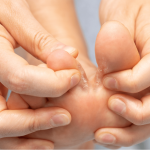What Is MonkeyPox?
Monkey pox is a virus transmitted to humans from animals with symptoms similar to those seen in the past in smallpox patients, although it is clinically less severe, monkey pox has emerged as the most important orthopoxvirus for public health. Monkey pox primarily occurs in central and west Africa, often in proximity to tropical rainforests, and has been increasingly appearing in urban areas. Animal hosts include a range of rodents and non-human primates.
Natural host of monkeypox virus
Various animal species have been identified as susceptible to monkey pox virus. This includes rope squirrels, tree squirrels etc.
Natural history of monkey pox virus and further studies are needed to identify the exact reservoirs and how virus circulation is maintained in nature.
Transmission
Transmission can occur from direct contact with the blood or mucosal lesions of infected animals. Eating inadequately cooked meat and other animal products of infected animals is a possible risk factor. People living in or near forested areas may have indirect or low-level exposure to infected animals.
While close physical contact is a well-known risk factor for transmission, studies are needed to better understand this risk
Signs and Symptoms
The infection can be divided into two periods:
- The invasion period lasts between 0–5 days characterized by fever, intense headache, swelling of the lymph nodes, back pain, muscle aches and intense lack of energy. Monkey pox compared to other diseases that may initially appear similar to chickenpox, measles or smallpox.
- The skin eruption usually begins within 1–3 days of appearance of fever. The rash tends to be more concentrated on the face and extremities rather than on the trunk. It affects the face and palms of the hands and soles of the feet.
Monkey pox is usually a self-limited disease with the symptoms lasting from 2 to 4 weeks. Severe cases occur more commonly among children and are related to the extent of virus exposure, patient health status and nature of complications. Underlying immune deficiencies may lead to worse outcomes also.
Prevention is better than cure
Raising awareness of risk factors and educating people about the measures they can take to reduce exposure to the virus is the main prevention strategy for monkey pox.
Overall:
Reducing the risk of transmission
Unlike bacterial infections, virus does not respond to antibiotics. Instead, treatment usually focus on managing symptoms and supporting the immune system with plenty of rest and hydration
*Contents referred from World Health Organization
















